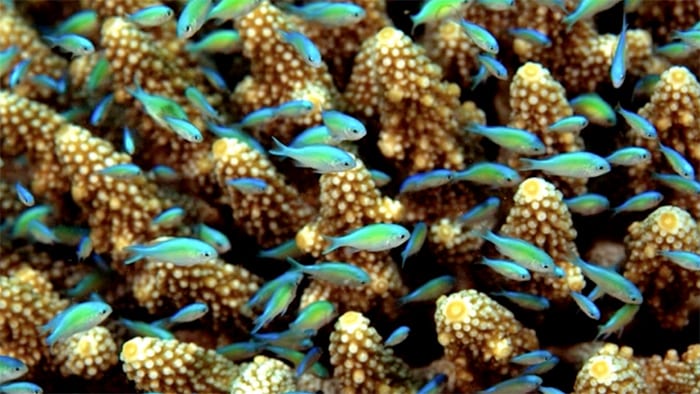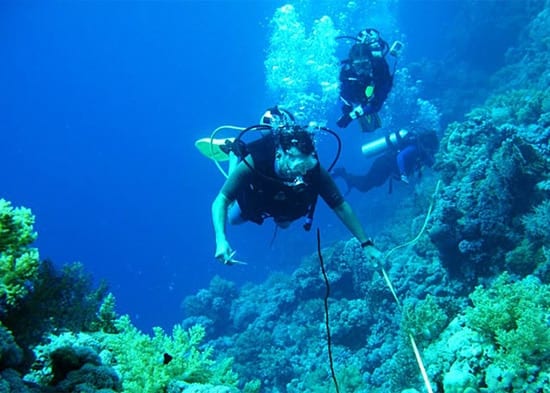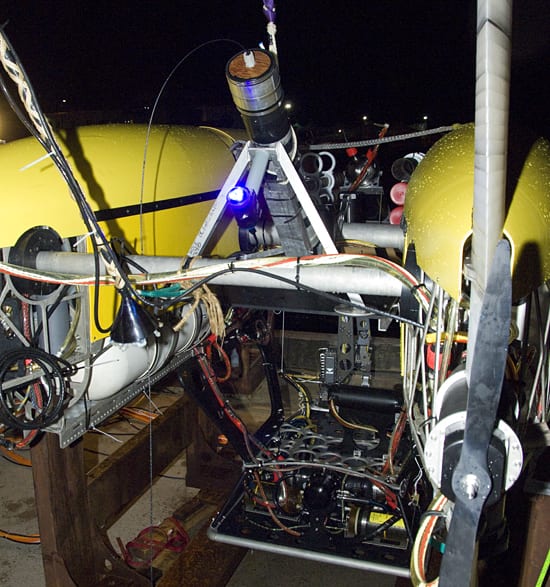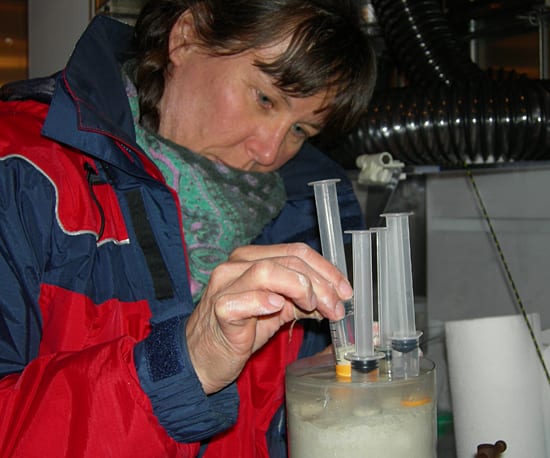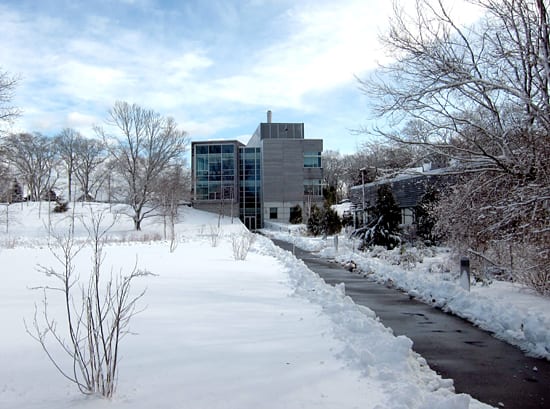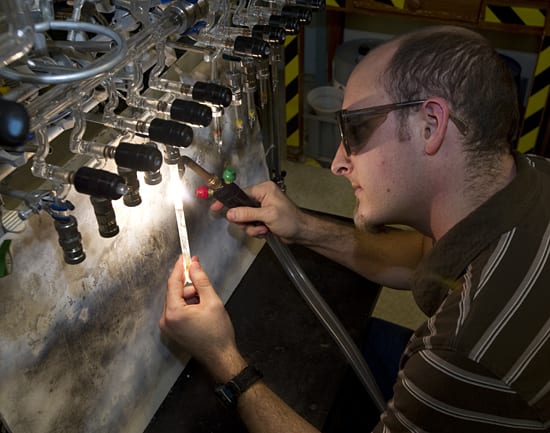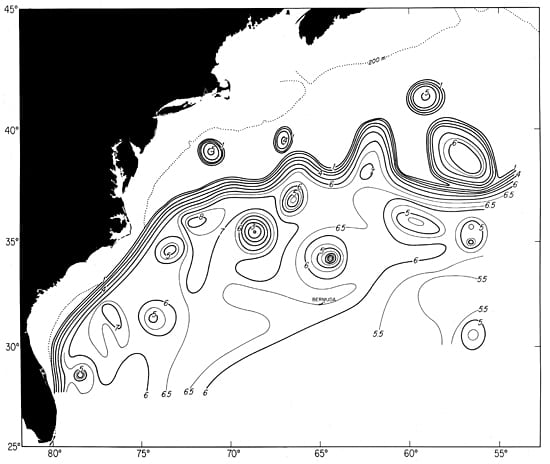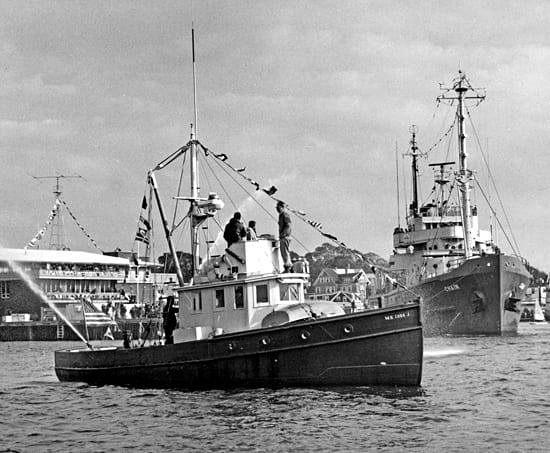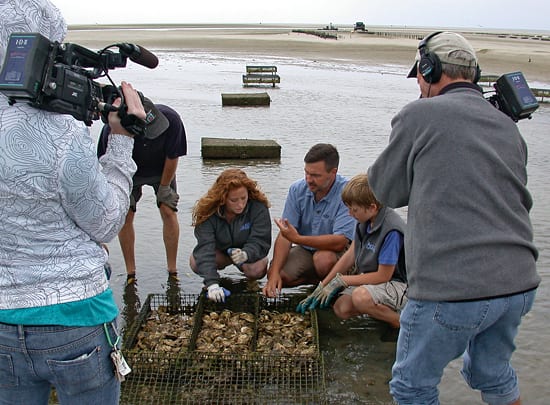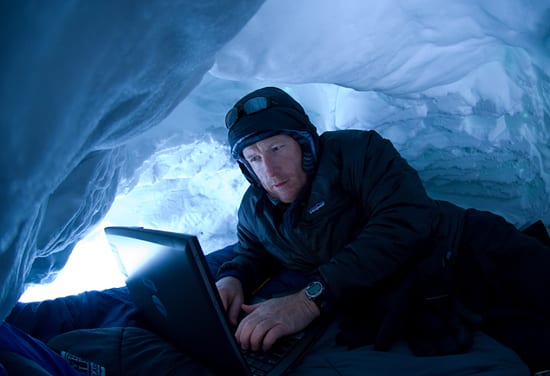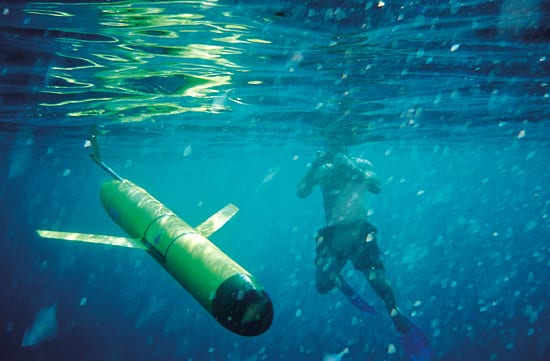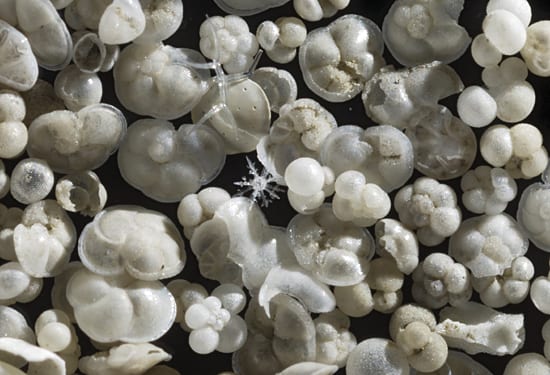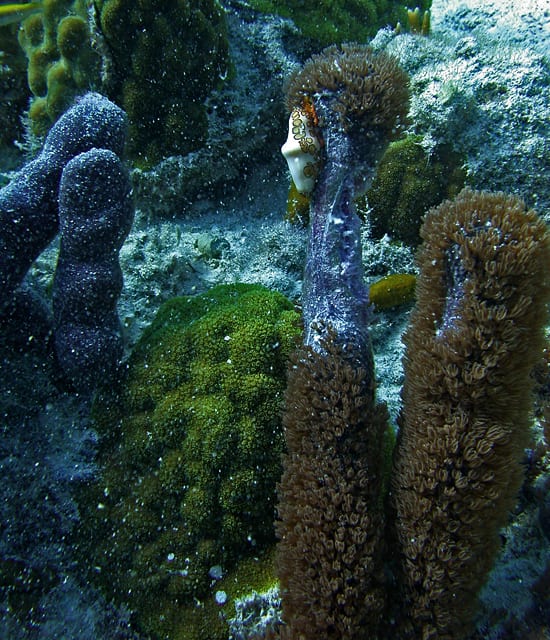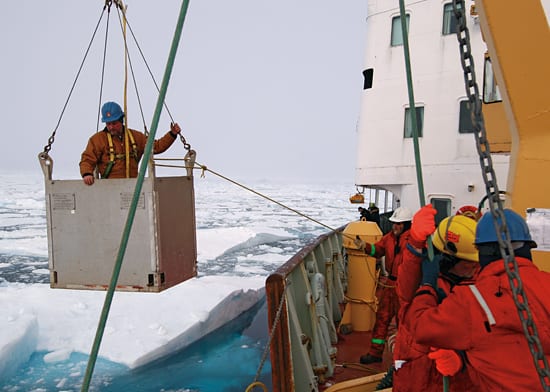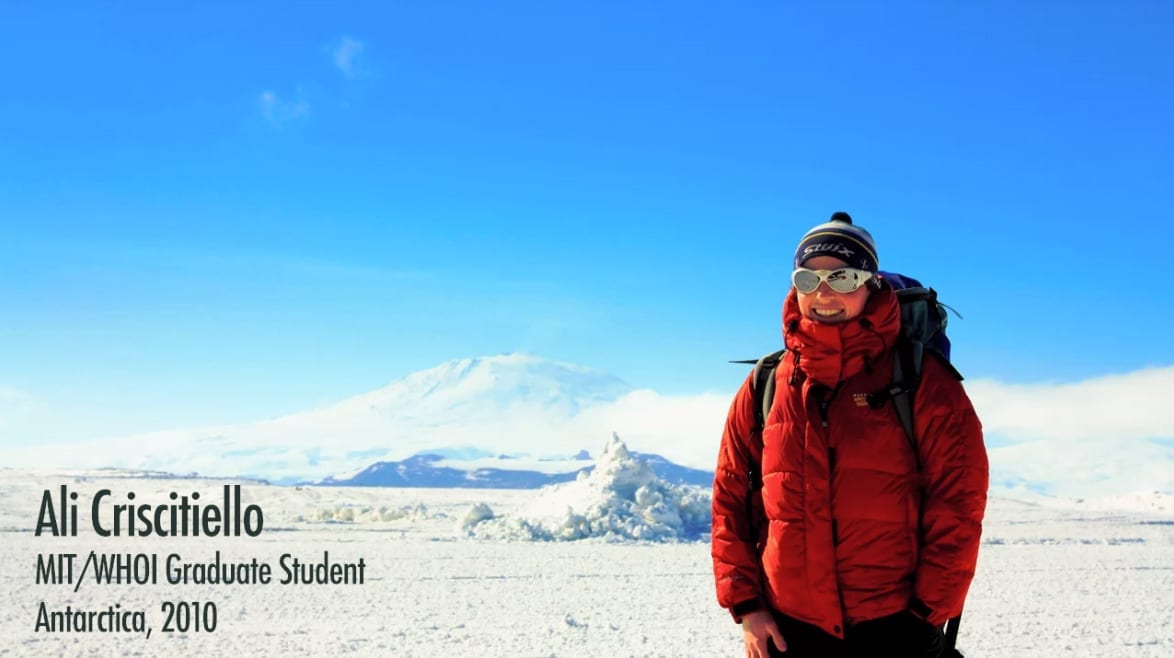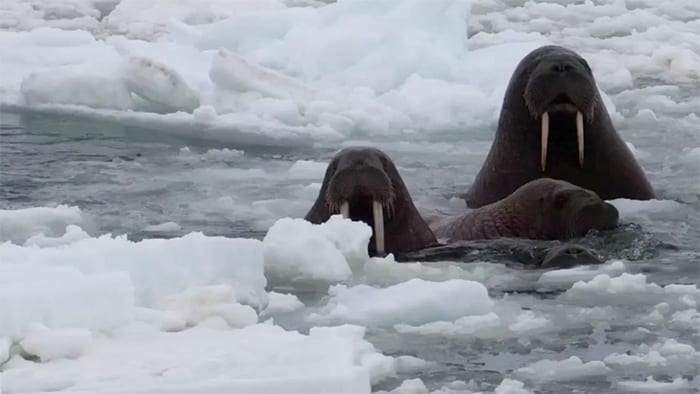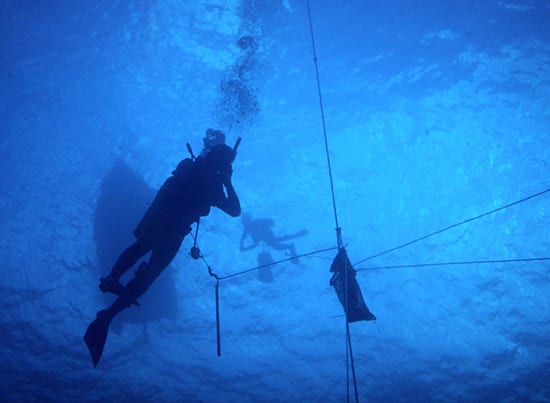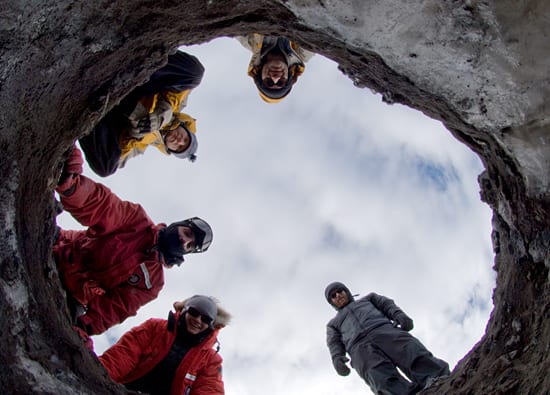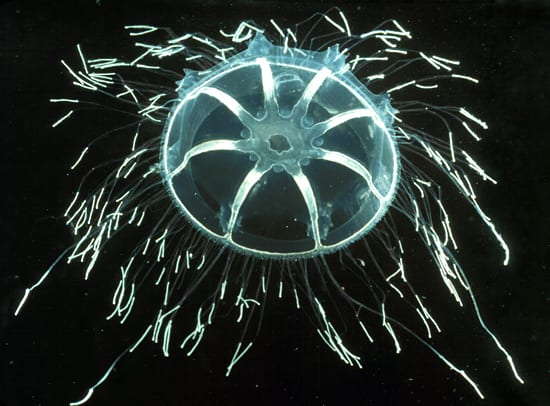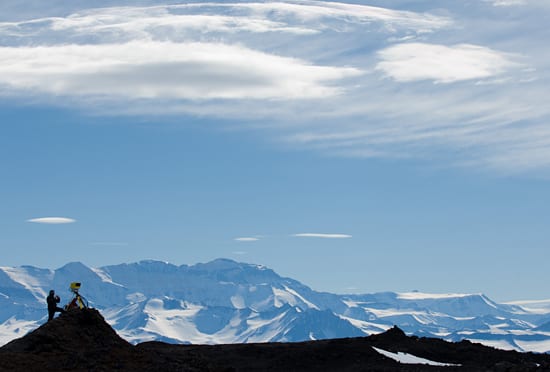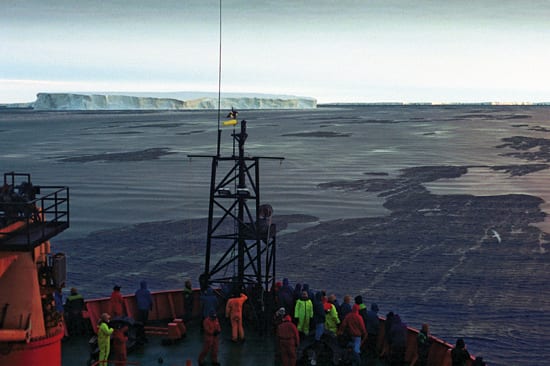Multimedia Items
On top of the A-boat
Atlantis master Adrian K. Lane stands on top of the deck house of the vessel in 1949. Atlantis was the first Woods Hole Oceanographic Institution research vessel and the first…
Read MoreOnce and Future Corals
WHOI scientist Conrad Hughen shares insights on studying coral reefs and the challenges they face for the future.
Read MoreThe Once and Future Corals
Earth’s history is inscribed in corals. But what’s the future of corals on Earth?
Read MoreNew optical system tested
The modem for the newly developed optical communications system is mounted for testing onto the Nereus, WHOI’s new hybrid remotely operated vehicle (HROV). The system, devised by a team led…
Read MoreFarewell ABE
The Autonomous Benthic Explorer, affectionately known as ABE, was one of the first successful submersible vehicles that was both unmanned and untethered to surface ships. First launched in 1995, ABE…
Read MoreSubsampling
WHOI scientist Joan Bernhard — shown here in a cold van subsampling multicores for FLEC (Fluorescently Labeled Embedded Core) analyses — and colleagues from Monterey Bay Aquarium Research Institute tested…
Read MoreA clear path
All paths are clear leading to the Stanley W. Watson Laboratory following a February 2010 snowfall. The 35,570-square-foot facility—located on the WHOI Quissett campus—opened its doors in 2005, providing new…
Read MoreMass spectrometry
Brett Walker, a former Summer Student Fellow, working in the National Ocean Sciences Accelerator Mass Spectrometry Facility (NOSAMS) in 2004. Accelerator mass spectrometry is a method of radiocarbon analysis where…
Read MoreCharting the flow
This chart of 1975 hydrographic and satellite data shows the path of the Gulf Stream and a number of warm-core and cold-core rings (north and south of the stream, respectively)…
Read MoreChain comes home
The Asterias (foreground) welcomes the Chain home from a 20-month, around-the-world cruise in 1970-71 that took investigators to the North and South Atlantic, the Indian Ocean, the Somali Current, the…
Read MoreAquaculture with Aqua Kids
Woods Hole Sea Grant Aquaculture and Fisheries Specialist Bill Walton explains how oysters are raised to the co-hosts of TV’s Aqua Kids program, James and Molly. The cast and crew…
Read MoreBlogging in an extreme environment
In winter 2007, Hugh Powell, a freelance science writer, filed daily dispatches from Ross Island, Antarctica, on Expedition 3 of WHOI’s Live from the Poles. Expedition members camped out in…
Read More“Green” glider
The Slocum glider is an autonomous vehicle that moves up and down in the ocean by changing buoyancy, using only heat energy from the ocean. The torpedo-shaped vehicle, measuring 2…
Read MoreA shell of their former selves
These fossilized, seafloor shells–seen under a microscope–are part of WHOI research to learn more about past ocean climate. The tiny shells of single-cell organisms that died and sank to the…
Read MoreEating its way up the food chain
An orange-speckled snail, Cyphoma gibbosum, munches its way up one of its favorite meals, a purple gorgonian with brown grass-like polyps named Biareum asbestinum, known locally as “dead man’s fingers”…
Read MoreOver the edge
John Kemp of the WHOI Applied Ocean Physics & Engineering Department goes over the side in a ship’s basket to take hold of a 4,000-meter mooring being retrieved in heavy…
Read MoreScientist Who Loves the Cold
MIT/WHOI graduate student studies ice in a warming world.
Read MoreTwo halves make a larger whole
A R/V Knorr refit from 1989-1991 included lengthening the vessel by 33 feet (10 meters) to 279 feet (85 meters). The ship was cut in half at McDermott Shipyard in…
Read MoreLife in the Arctic…After Climate Change
As spring sunlight returns to the Bering Sea, life blooms. Scientists explore how this rich Arctic ecosystem may shift with climate change.
Read MoreInto the open ocean
Open-ocean SCUBA diving from research vessels began to reveal more about the world of jellies during cruises in the 1970s. To make their collections and observations and avoid becoming lost…
Read MorePeering into a pit
WHOI scientists set up an isolated research camp in the cold Dry Valleys in Antarctica in December 2007 on a monthlong expedition to explore how the volcanic landscape formed and…
Read MoreTentacled predators
Probably the most familiar jellies are jellyfish, such as this one—technically called medusae, and belonging to two divisions of the phylum Cnidaria. Jellyfish are predators that use tentacles studded with…
Read MoreExploring a volcanic landscape
WHOI scientists set up an isolated research camp in the cold Dry Valleys in Antarctica in December 2007 on a month-long expedition to explore how the volcanic landscape formed and…
Read MoreTesting the waters
Scientists aboard the Australian research vessel Aurora Australis studied the natural cycling of iron in the Southern Ocean in 2001. Ken Buesseler, a marine chemist at Woods Hole Oceanographic Institution,…
Read More

